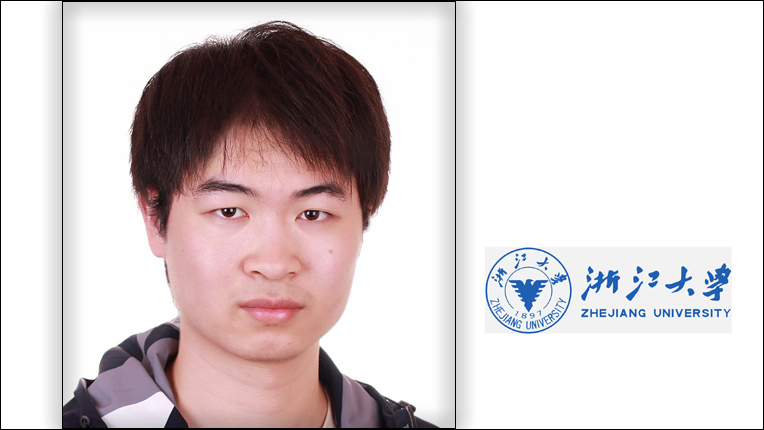SRC Grand Finalists 2021
GRADUATE CATEGORY
First Place:
Jiaqi Gu - University of Texas at Austin
ICCAD 20
Title of Submission: Light in Artificial Intelligence: Efficient Neuromorphic Computing with Optical Neural Networks
Second Place:
Konstantinos Kallas - University of Pennsylvania
POPL 2021
Title of Submission: Data-Parallel Shell Scripting
Third Place:
Guyue Huang - Tsinghua University
SIGMICRO 2020
Title of Submission: Efficient Sparse Matrix Kernels based on Adaptive Workload-Balancing and Parallel-Reduction
UNDERGRADUATE CATEGORY
First Place:
Thomas B. McHugh - Northwestern University
ASSETS 2020
Title of Submission: Constructing Agency and Usability Through Community-Driven Assistive Technology Design
Second Place:
Chuangtao Chen - Zhejiang University
ICCAD 20
Title of Submission: Optimally Approximated Floating-Point Multipliers
Third Place:
Rakshit Mittal - Birla Institute of Technology
PLDI 2020
Title of Submission: Translation Validation of Thread-Level Parallelizing Transformations using Color Petri Nets
ACM Student Research Competition
The ACM Student Research Competition is an internationally recognized venue enabling undergraduate and graduate students to experience the research world, share research results and exchange ideas, rub shoulders with academic and industry luminaries, understand the practical applications of their research and gain recognition.

Graduate: First Place
Jiaqi Gu, University of Texas at Austin
"Light in Artificial Intelligence: Efficient Neuromorphic Computing with Optical Neural Networks" (ICCAD 2020)
Deep neural networks have received an explosion of interest for their superior performance in various intelligent tasks and high impacts on our lives. The computing capacity is in an arms race with the rapidly escalating model size and data amount for intelligent information processing. Practical application scenarios, e.g., autonomous vehicles, data centers, and edge devices, have strict energy efficiency, latency, and bandwidth constraints, raising a surging need to develop more efficient computing solutions. However, as Moore’s law is winding down, it becomes increasingly challenging for conventional electrical processors to support such massively parallel and energy-hungry artificial intelligence (AI) workloads. .. [Read more]

Graduate: Second Place
Konstantinos Kallas, University of Pennsylvania
"Data-Parallel Shell Scripting" (POPL 2021)
This paper introduces PaSh, a new shell that exposes data parallelism in POSIX shell scripts. To achieve that, PaSh proposes: (i) an order-aware dataflow model that captures a fragment of the shell, (ii) a set of dataflow transformations that extract parallelism and have been proven to be correct, (iii) a lightweight framework that captures the correspondence of shell commands and order-aware dataflow nodes, and (iv) a just-in-time compilation framework that allows for effective compilation despite the dynamic nature of the shell. A preliminary evaluation of PaSh on 50 unmodified Unix scripts on a 16-core machine shows significant speedups (up to 14.93×, avg: 4.15×)... [Read more]

Graduate: Third Place
Guyue Huang, Tsinghua University
"Efficient Sparse Matrix Kernels based on Adaptive Workload-Balancing and Parallel-Reduction" (SIGMICRO 2020)
Sparse matrix-vector and matrix-matrix multiplication (SpMV and SpMM) are fundamental in both conventional (graph analytics, scientific computing) and emerging (sparse DNN, GNN) domains. Workload-balancing and parallel-reduction are widely-used design principles for efficient SpMV. However, prior work fails to resolve how to implement and adaptively use the two principles for Sp- MV/MM. To overcome this obstacle, we first complete the implementation space with optimizations by filling three missing pieces in prior work, including: ... [Read more]

Undergraduate: First Place
Thomas McHugh, Northwestern University
"Constructing Agency and Usability Through Community-Driven Assistive Technology Design" (ASSETS 2020)
Despite assistive technologies existing to help people with disabilities interact with software, these tools are often hard to use andnot personalized to what a user individually needs. In response to these challenges, new work in the maker community has sought to empower people with disabilities to build their own assitive technologies and to create agency over how one can interact withtechnology. We discuss current challenges to building assistive technology and overcome these obstacles by presenting V11, a simplecross-platform programming interface to enable the creation of community-driven assistive technology. To evaluate the effectiveness of V11 in environments with novice programmers, we conducted design workshops with undergraduate CS students, who brainstormed solutions to a real accessibility problem and then used V11 to prototype their idea.... [Read more]

Undergraduate: Second Place
Chuangtao Chen, Zhejiang University
"Optimally Approximated Floating-Point Multiplier" (ICCAD 2020)
At the edge, IoT devices are designed to consume the minimum resource to achieve the desired accuracy. However, the conventional processors, such as CPU or GPU, can only conduct all the computations with predetermined but sometimes unnecessary precisions, inevitably degrading their energy efficiency. When running data-intensive applications, due to the large range of input operands, most conventional processors heavily rely on floating-point units (FPUs). Recently, approximate computing has become a promising alternative to improve energy efficiency for IoT devices on the edge, especially when running inaccuracy-tolerable applications. For various data-intensive tasks on edge devices, multiplication is a common but the most energy consuming one among different floating-point operations. As a common arithmetic component that has been studied for decades [1]–[3], the past focus on the FP multiplier is accuracy and performance... [Read more]

Undergraduate: Third Place
Rakshit Mittal, Birla Institute of Technology & Science, Pilani, KK Birla Goa Campus
"Translation Validation of Thread-Level Parallelizing Transformations using Color Petri Nets" (PLDI 2020)
Software applications often require the transformation of an input source program into a translated one for optimization. In this process, preserving the semantics across the transformation also called equivalence checking is essential. In this paper, we present ongoing work on a novel translation validation technique for handling loop transformations such as loop swapping and distribution, which cannot be handled by state-of-the-art equivalence checkers. The method makes use of a reduced size Petri net model integrating SMT solvers for validating arithmetic transformations. The approach is illustrated with two simple programs and further validated with a programs benchmark... [Read more]
